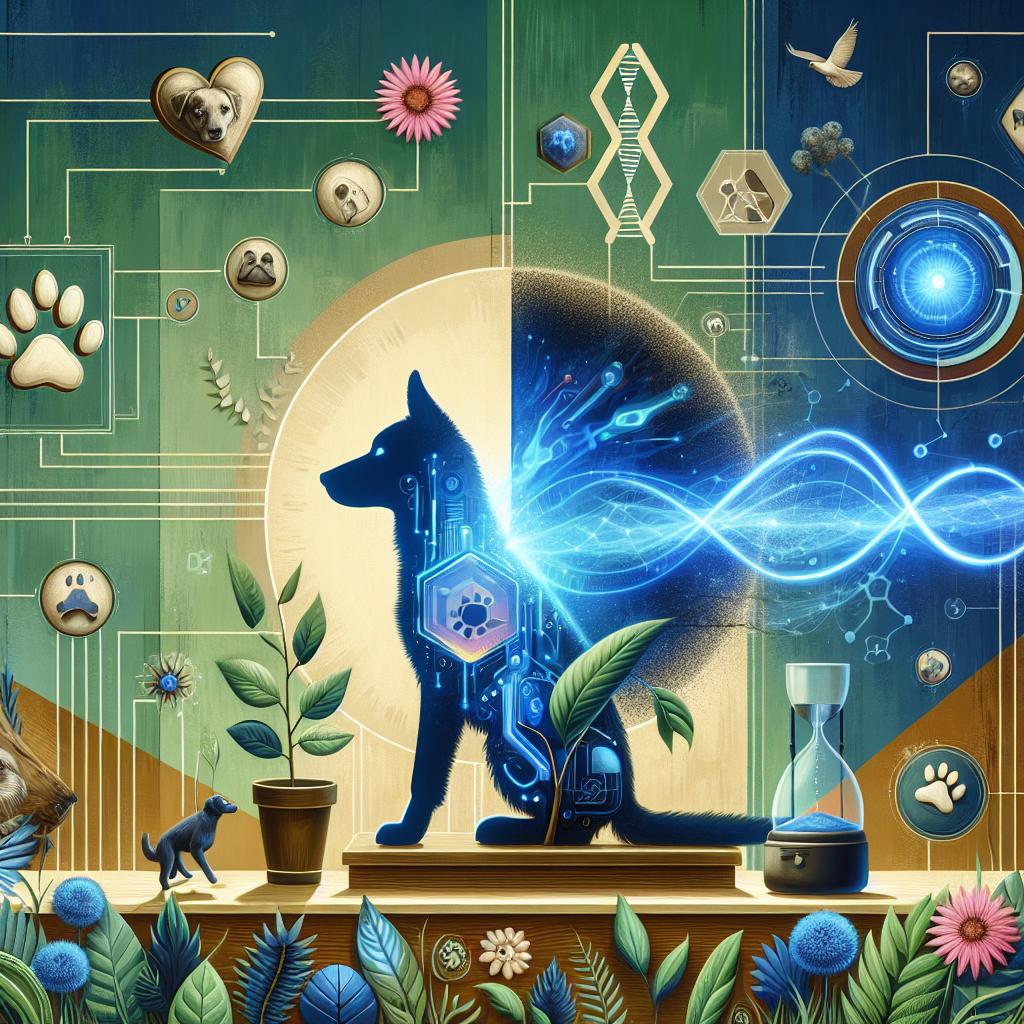Introduction: Unpacking the Lick: Understanding and Managing Canine Licking Behavior
For dog owners, the sight of a furry friend engaging in a seemingly harmless licking spree can evoke a mix of affection and concern. Whether it’s a persistent insistence to clean thier paws, an unyielding obsession with a favorite toy, or the all-too-common tendency to shower their humans with slurpy kisses, licking is one of the most instinctual behaviors in dogs. While occasional licking is perfectly normal, excessive licking can lead to various issues, from skin irritations to disruptive habits that strain the bond between a pet and their owner. In this article, we delve into the causes behind licking behavior in dogs, explore effective prevention strategies, and offer corrective measures for managing this trait. Join us as we navigate the intricate world of canine behavior, equipped with insights and practical tips to foster a happier, healthier relationship with your beloved companion.
Understanding the Causes Behind Excessive Licking in Dogs
Excessive licking in dogs can stem from a variety of underlying causes that can be both physical and psychological. One primary reason is allergies,which can cause irritation leading to compulsive licking as dogs attempt to relieve discomfort. Common allergens include certain foods, pollen, or dust mites.Additionally, some canines may suffer from skin infections that compel them to lick the affected area in an attempt to soothe the irritation. Other physical conditions, like pain or discomfort from injuries, can also trigger this behavior, prompting dogs to focus on the painful region.
However, licking may not always indicate a physical problem; it can also result from anxiety or stress. Dogs may engage in this behavior as a coping mechanism in response to environmental changes, separation anxiety, or boredom. Factors such as inadequate exercise, lack of mental stimulation, and changes in routine can contribute to heightened stress levels. Understanding these causes is crucial, as addressing them can pave the way toward proper treatment and correction of excessive licking.

Identifying Triggers and Patterns to Manage Licking Behavior
Understanding your dog’s licking behavior requires careful observation and an analytical approach. A important first step is to identify the triggers that lead to excessive licking, whether they are physical, emotional, or environmental. For instance, a dog may lick in response to anxiety during thunderstorms, boredom when left alone for extended periods, or physical discomfort due to allergies. By keeping a diary of these episodes, you can pinpoint the specific situations or conditions that lead to licking. Look for patterns in the frequency of licking related to particular triggers:
| Potential Triggers | Observations |
|---|---|
| Environmental Stressors | Increased licking during noisy events (fireworks,parties) |
| Physical Irritations | Licking after walks on grassy surfaces (possible allergies) |
| Emotional States | Licking when meeting new people or pets (nervousness) |
Once you’ve identified these triggers,you can create a management plan that includes regular exercise to alleviate boredom,environmental enrichment to reduce stress,or even consult a veterinarian for skin allergies. Additionally, implementing positive reinforcement strategies can redirect your dog’s behavior. Whenever your dog refrains from licking during a possibly stimulating moment, offer praise or a treat to reinforce this positive behavior. With persistence and monitoring, you can guide your dog toward healthier coping mechanisms that significantly reduce licking.
Effective Strategies for Redirecting Licking Habits
Redirecting licking habits in dogs requires a mix of consistency and creativity. One effective approach is to provide alternative activities that can capture their attention and energy. Here are some strategies you can incorporate:
- Engage your dog in interactive toys that dispense treats, making licking more purposeful.
- Introduce chew items designated for them, redirecting their behavior away from excessive licking.
- Establish a routine of physical exercises to help burn off any anxious energy that may lead to licking.
Consistency is key in changing unwanted behaviors. Positive reinforcement when your dog opts for the redirected activity will create positive associations with the new behavior. Consider setting up a reward chart to monitor their progress:
| Activity | Reward |
|---|---|
| Using Chew Toy | 1 Treat |
| Engaging with Interactive Toy | 2 Treats |
| Daily Walks | 1 Extra Playtime |
Using these techniques, you can successfully guide your dog towards healthier engagement and minimize licking tendencies.
Healing the Skin: Addressing Physical and Emotional Factors
Understanding and addressing the dual aspects of skin healing is crucial when tackling licking behavior in dogs.First, it’s important to consider the physical factors that can lead to irritation and discomfort. Common culprits include allergies—be they environmental, dietary, or flea-related—skin infections, or underlying health issues.Providing a conducive surroundings for healing involves adopting measures such as:
- Regular grooming to remove allergens and debris
- Moisturizing treatments to soothe irritated skin
- Using allergy medications or specialized diets as advised by a veterinarian
Equally critically important are the emotional triggers that may manifest in excessive licking. Stress, anxiety, and boredom can exacerbate this behavior, leading to a cycle that hinders skin recovery. Enhancing your dog’s emotional well-being can significantly impact their overall health. Some effective strategies include:
- Engaging in regular exercise to expend energy and reduce stress
- Introducing interactive toys to stimulate mental engagement
- Practicing gradual desensitization techniques for anxiety-inducing situations
| Factor | Impact on Licking |
|---|---|
| Allergies | Increases itchiness,prompting licking |
| Infections | Leads to discomfort and localized licking |
| Stress and Anxiety | Triggers compulsive licking behavior |
| Boredom | Prompts self-soothing through licking |
Q&A
Q&A: Preventing and Correcting Licking Behavior in Dogs
Q: What is licking behavior in dogs,and why do they do it?
A: Licking is a common and natural behavior for dogs. they may lick to explore their environment, show affection, groom themselves, or seek attention. Sometimes, excessive licking can indicate anxiety, boredom, or even health issues, making it important to understand the underlying reasons behind your dog’s behavior.
Q: How can I tell if my dog’s licking behavior is excessive?
A: Excessive licking is often characterized by consistent licking of the same area, to the point of causing irritation or injury.If your dog is licking obsessively,disrupting their daily activities,or showing signs of distress,it’s a sign to evaluate the behavior further.
Q: What are some effective strategies to prevent excessive licking?
A: There are several approaches to reduce licking behavior:
- Ensure Physical and Mental Stimulation: Regular walks,playtime,and interactive toys can keep your dog engaged and reduce boredom-related licking.
- Positive Reinforcement: Reward your dog with treats or praise for redirecting their focus away from licking to other activities.
- Create a Calm Environment: If anxiety is a trigger, consider integrating calming techniques such as a secure space, calming music, or a snug blanket.
Q: are there any health concerns related to excessive licking?
A: Yes, excessive licking can lead to health issues such as skin infections, hotspots, or gastrointestinal problems if they lick surfaces or objects excessively. It’s crucial to consult with a veterinarian if you notice changes in your dog’s licking behavior, as it can signify an underlying medical condition.
Q: can training techniques help correct unwanted licking?
A: Absolutely! Training can play a major role in managing licking behavior. Techniques such as ‘leave it’ commands and redirection can teach your dog to focus on appropriate behaviors. Consistency is key—practice regularly to reinforce these commands so your dog learns to understand expectations.
Q: Is there any role for professional help in dealing with licking behavior?
A: If you’re struggling to manage the licking behavior on your own, seeking help from a professional dog trainer or animal behaviorist can provide valuable insights. They can assess the situation, offer tailored strategies, and support your efforts in creating a positive change for your furry friend.
Q: What steps should I take if I suspect my dog’s licking is due to anxiety?
A: Begin by identifying potential triggers for your dog’s anxiety—new environments, loud noises, or changes in routine. Gradual desensitization to these triggers, along with soothing techniques such as interactive play and relaxation exercises, can help.Consulting a veterinarian for additional options, like anxiety-reducing medications or supplements, may also be beneficial.
Q: Can diet influence licking behavior in dogs?
A: Yes,diet can significantly impact a dog’s behavior,including licking. Allergies or sensitivities to certain food ingredients can lead to skin irritations and excessive licking.Ensuring your dog has a balanced diet and ruling out food-related issues through consultation with a vet can definitely help minimize licking behavior.
Q: How long does it typically take to correct excessive licking behavior?
A: The timeline for correcting excessive licking behavior varies based on the individual dog and the underlying cause. Some dogs may respond quickly to changes in routine or training, while others may need ongoing support and patience. Consistency and commitment to the chosen strategies will greatly influence success.
With understanding, patience, and effective strategies, you can definitely help manage and correct your dog’s licking behavior for a happier, healthier companion.
Closing Remarks
managing and correcting licking behavior in dogs requires a blend of understanding, patience, and consistent training. By identifying the underlying causes—be it anxiety, boredom, or a medical issue—you can tailor your approach to meet your dog’s specific needs. Employing positive reinforcement, providing engaging activities, and being mindful of their health can create a harmonious environment where both you and your canine companion thrive. Remember, every dog is unique, and a little care can go a long way in fostering a trusting relationship. As you embark on this journey of training and understanding, may you find joy in the process and celebrate the little victories along the way. Here’s to a happier, healthier, and more comfortable companionship with your furry friend!

